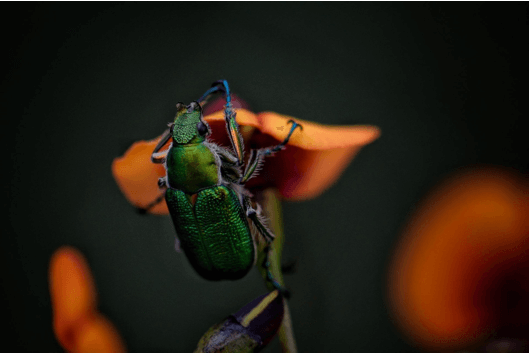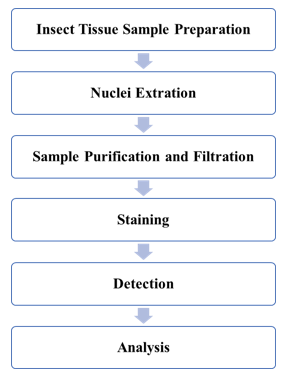Due to their small size, insects have more impurities in their bodies. It is difficult to sample and analyze insects, and the amorphous germ cells of insects will also interfere with the result of genome size and ploidy. In addition, most insects are protected by hard shells, which makes sampling more difficult.

To achieve large-scale genome and ploidy analysis of insects, after years of research, Lifeasible has improved traditional assay methods to be more adaptable to a wide variety of insect structures. We have developed different sample extraction methods for insects with different body shapes, shell types and reproductive structures, and solved the problems that may arise in insect genome size and ploidy detection through customized solutions.

We can provide customized services for our customers, whether it is Locusts, butterflies, bees, dragonflies, flies, grasshoppers, cockroaches or other insect, we will develop a set of extraction and testing procedures for customers' samples to ensure the perfect presentation of the results.
 Figure 1. Analysis of DNA content and ploidy in plants. (A, B) tissues were chopped with a fresh razor blade, stained with PI, and acquired on the BD Accuri C6. On an FL2 vs FL3 plot, nuclear events cluster in a narrow diagonal region, (C) Gating on these nuclear events, FL2 fluorescence shows clear peaks corresponding to cell ploidy.
Figure 1. Analysis of DNA content and ploidy in plants. (A, B) tissues were chopped with a fresh razor blade, stained with PI, and acquired on the BD Accuri C6. On an FL2 vs FL3 plot, nuclear events cluster in a narrow diagonal region, (C) Gating on these nuclear events, FL2 fluorescence shows clear peaks corresponding to cell ploidy.

We offer complete, professional insect genome size and ploidy detection services, as well as customized experimental protocols based on your project requirements and sample characteristics. For more information or any inquiry requirements, please contact Lifeasible.
Reference
Lifeasible has established a one-stop service platform for plants. In addition to obtaining customized solutions for plant genetic engineering, customers can also conduct follow-up analysis and research on plants through our analysis platform. The analytical services we provide include but are not limited to the following:
Get Latest Lifeasible News and Updates Directly to Your Inbox
Adaptive Evolutionary Mechanism of Plants
February 28, 2025
Unraveling Cotton Development: Insights from Multi-Omics Studies
February 27, 2025